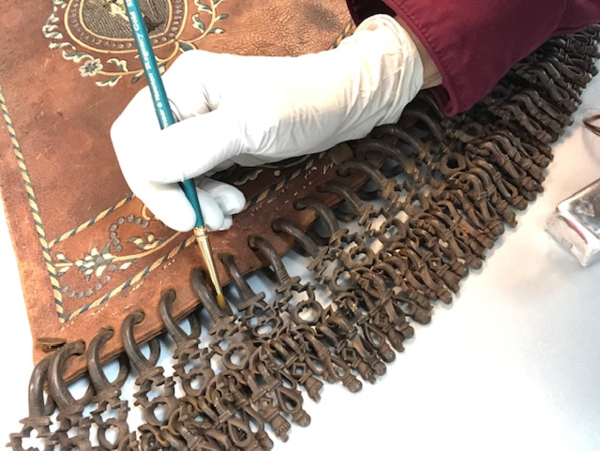Oceania
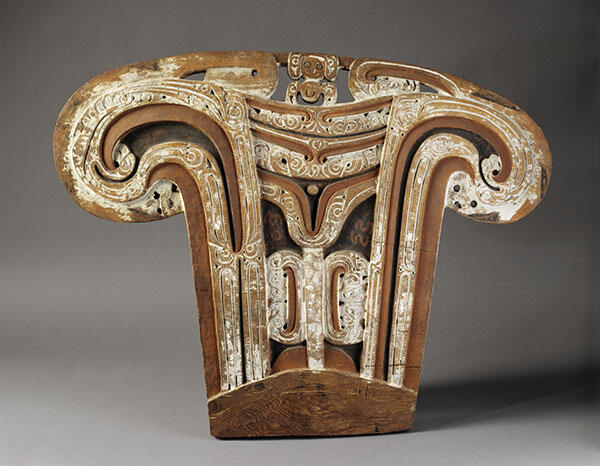 Oceania—comprising the islands of the North and South Pacific, Aotearoa (New Zealand), and the continent of Australia—is the largest geographic area of the world with over 100 million square kilometers of the Pacific Ocean from the islands of Papua New Guinea in the west and Rapa Nui (Easter Island) in the east. Oceanic Collections in the Museum represent the diversity of the region, from the oldest continuous living cultures of Australia dating back to 65,000 years, to the most recently settled land mass in the world by the Māori people less than one thousand years ago. The collections are almost entirely ethnographic and photographic, acquired by Massachusetts merchants, traders, explorers, missionaries and researchers during Pacific voyages dating back to the late-eighteenth century as well as from scientific and anthropological expeditions in the twentieth century.
Oceania—comprising the islands of the North and South Pacific, Aotearoa (New Zealand), and the continent of Australia—is the largest geographic area of the world with over 100 million square kilometers of the Pacific Ocean from the islands of Papua New Guinea in the west and Rapa Nui (Easter Island) in the east. Oceanic Collections in the Museum represent the diversity of the region, from the oldest continuous living cultures of Australia dating back to 65,000 years, to the most recently settled land mass in the world by the Māori people less than one thousand years ago. The collections are almost entirely ethnographic and photographic, acquired by Massachusetts merchants, traders, explorers, missionaries and researchers during Pacific voyages dating back to the late-eighteenth century as well as from scientific and anthropological expeditions in the twentieth century.
The Peabody Museum also stewards collections with important historical links to the Pacific Islands from the neighboring Southeast Asian region, notably from Indonesia and the Philippines.
Canoe prow splashboard from Massim region of the Trobriand Islands, Papua New Guinea, Gift of Wiiliam McM. Woodworth, 11-2-70/83777Interested in learning more about the collections?
Check out some highlights below, or search for specific collections in the database
Highlights from the Oceanic Collections
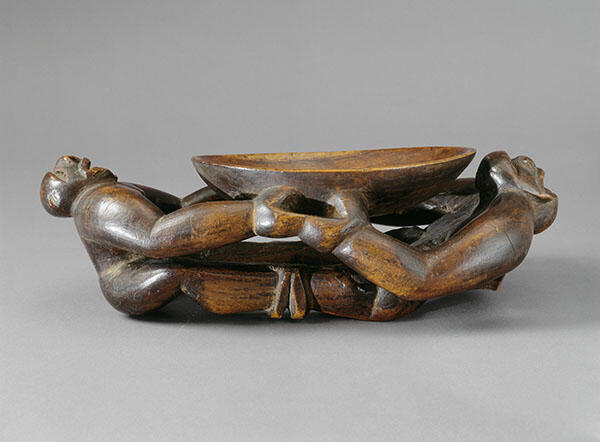
Ethnographic collections from 1790-1850 created by a diversity of artists and makers from across the region, collected during the China Maritime Trade, the Massachusetts Whaling Industry, and American Board of Commissioners for Foreign Missions early period.
Carved wooden bowl from Hawai`i. Gift of Heirs of David Kimball, 1899, 99-12-70/53571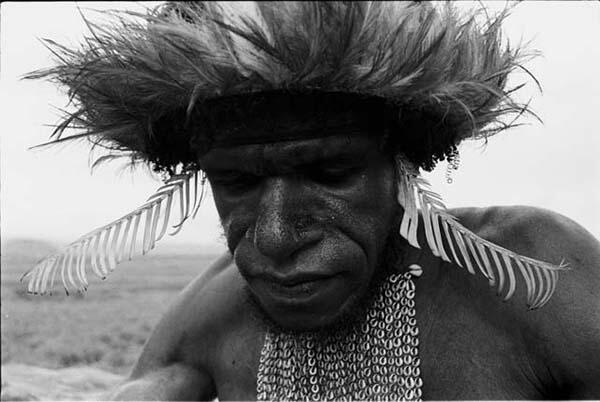
Photographs and sound recordings with the Grand Valley Dani of Irian Jaya, Indonesia (formerly New Guinea) as part of the 1961 Harvard-Peabody New Guinea Expedition with filmmaker Robert Gardner of Dead Birds fame
Portrait of Limo, Photograph by Robert G. Gardner. Gift of Robert Gardner, 2006.16.1.3.23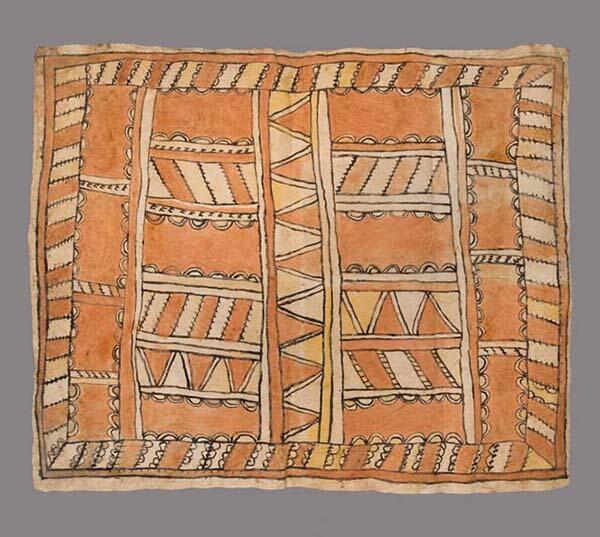
Extensive collection of over 500 tapa (beaten and decorated bark cloth), as well as tapa beaters, stencils and other tools from across the region, notably from Fiji, Samoa, Tonga, Niue, and Hawaiʻi
Tapa (barkcloth) from Aitutaki, Cook Islands. Gift of Alexander Agassiz 1900, 00-8-70/55417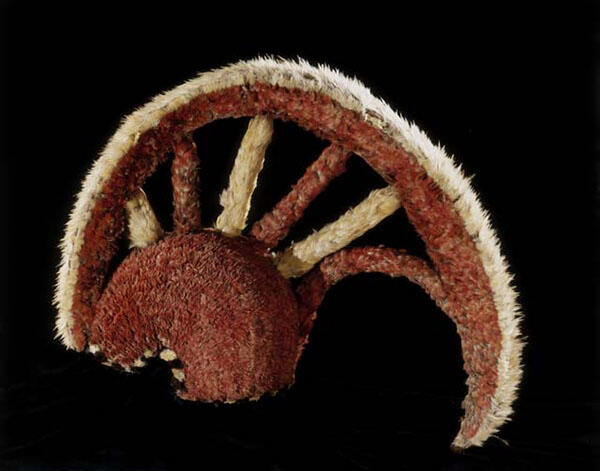
Impressive featherwork from across the Polynesian region, including helmets, cloaks and kāhili staffs from Hawai`i, body ornaments from Chuuk and the Marshall Islands, headdresses from the Austral Islands and Papua New Guinea, as well as feather and flax cloaks from Aotearoa/New Zealand
Mahiole (feathered helmet) from Hawai`i. Gift of Heirs of David Kimball 1899, 99-12-70/53559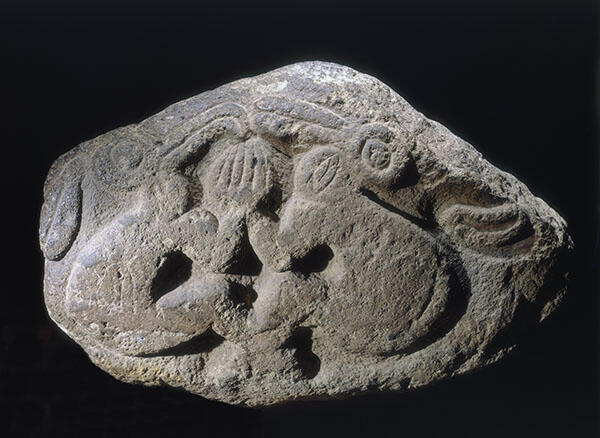
Ethnographic collections from Rapa Nui, including rare bark cloth figures, carved wooden figures, and Orongo petroglyphs associated with the birdman cult of Tangata Manu
Rock carving from Orongo, Rapa Nui (Easter Island). Gift of Alexander Agassiz 1905, 05‐2‐70/64852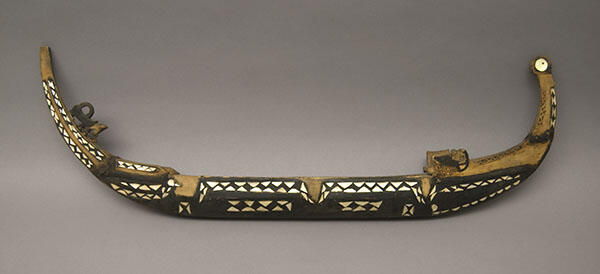
Several large collections from the Solomon Islands acquired during research expeditions, including ethnographic materials associated with the Siwai people of Bougainville from anthropologist Douglas Oliver in 1938, and a significant collection of field notes, photographs, measurements, and dental casts as part of the 1960s interdisciplinary Harvard Solomon Islands Project with Albert Damon
Model of canoe from the Solomon Islands. Museum Purchase, Huntington Frothingham Wolcott Fund 1917, 17-53-70/D850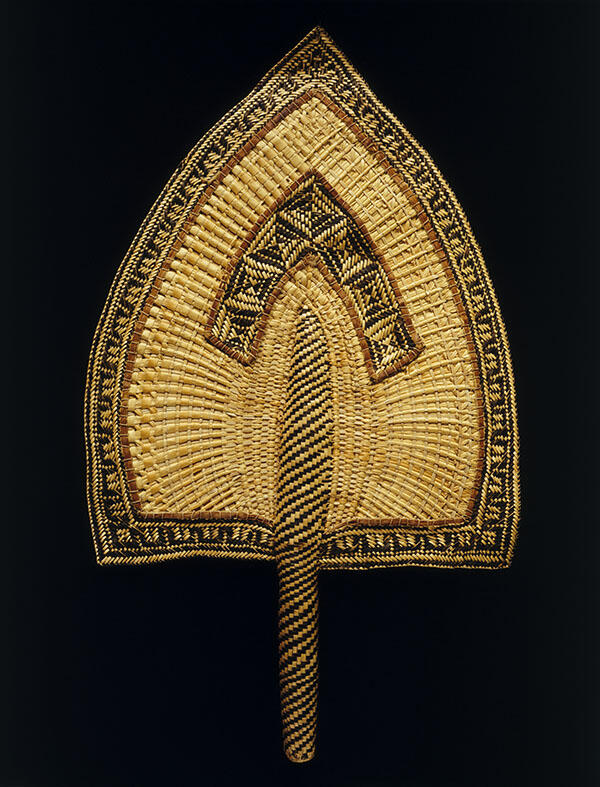
One of the largest US collections acquired between 1895 and 1905 as part of the U.S. Fish Commission Expeditions undertaken collaboratively with US government, Smithsonian, and Harvard scientists which includes material from across Micronesia and Polynesia.
Woven fan from the Marshall Islands. Gift of Alexander Agassiz, 1900, 00-8-70/55574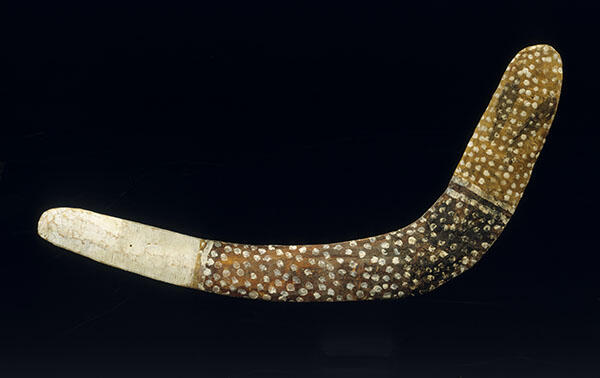
Extensive Australian collections, primarily collected by anthropologists Norman Tindale and Joseph Birdsell as part of the Harvard-Australia Expeditions of the 1930s and 1950s, as well as some earlier lithic material collected by B.H. Whittle
Yolŋu non-returning boomerang from Australia. Museum Purchase, Peabody Museum Association Fund 1930, 30-54-70/D3454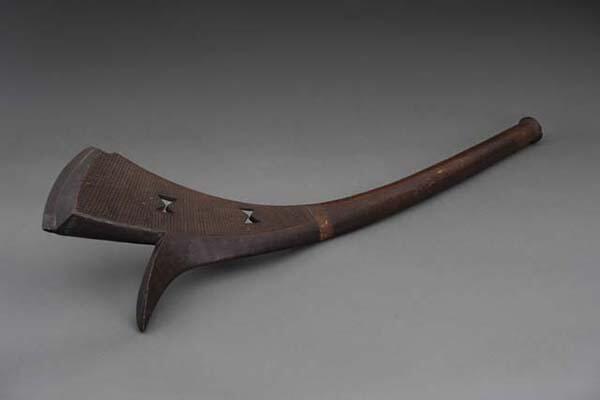
Carved clubs, paddles, and staffs from across the entire region, from Marquesan u’u’ clubs, Buka paddles from the northern Solomon Islands and a variety of Fijian ‘war clubs’
Sali (wooden war club) from Fiji. Gift of the Museum of Science, Boston 1961, 61-8-70/3935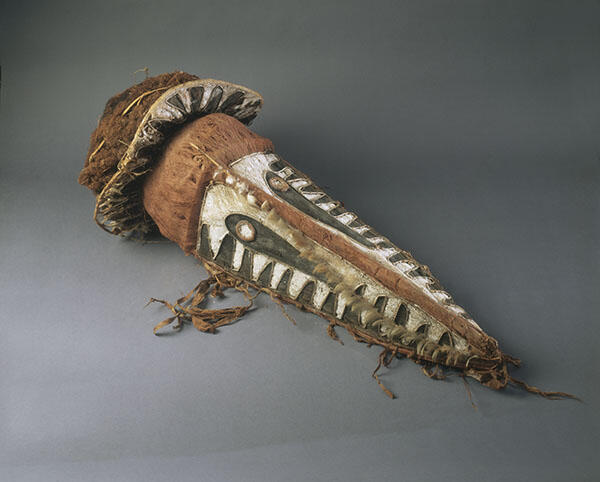
One of oldest US collections from Papua New Guinea, including ethnographic materials from the Dani, Asmat, and Sepik River area and Papuan Gulf collected in the 1880s, as well as sound recordings and photographs from the Crane-Peabody Museum New Guinea expedition 1936-1939
Eharo dance mask from the Elema District of Papua New Guinea. Museum purchase 1891, 91‐6-70/50524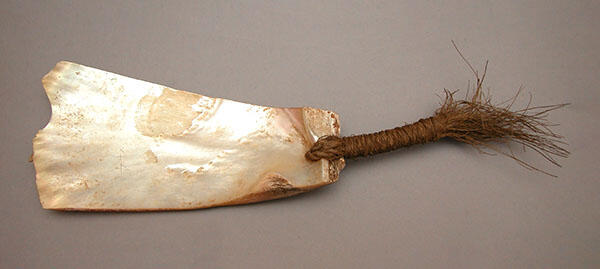
Collections from the Peabody Museum Expedition to Yap Island, Micronesia, 1947-1948 including photographs, field notes by David Schneider and the expedition team, and ethnographic materials
Yar (oyster shell money) from Yap, Micronesia. Peabody Museum Expedition 1947, 48-51-70/2981